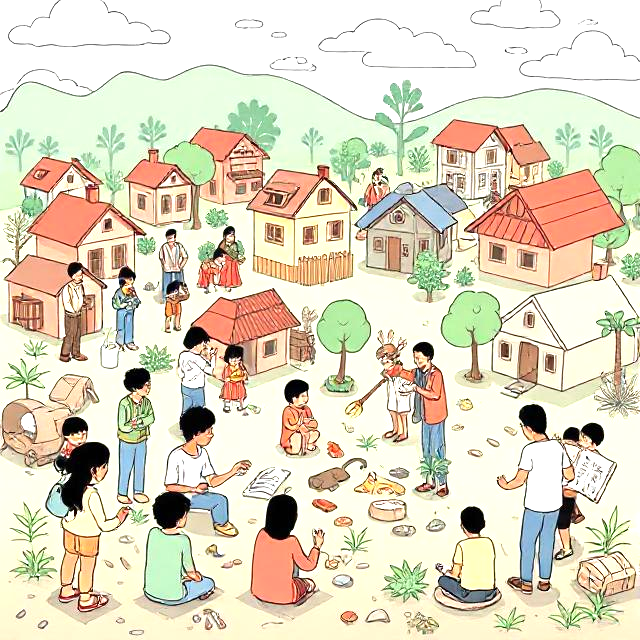Natural Disasters and Developing Countries
Posted_Date
Image

Body
Natural disasters have significant impacts on developing countries. Hazards such as earthquakes, storms, floods, and droughts damage infrastructure, agriculture, and industries, slowing down economic growth. Due to limited financial resources, recovery efforts in developing countries tend to be slow. Additionally, natural disasters cause loss of life, injuries, and displacement, worsening poverty and inequality. The disruption of clean water supplies, outbreaks of infectious diseases, and damage to healthcare systems affect public healthcare. The destruction of schools and educational institutions halts children’s education, leading to long-term human capital losses and hindering sustainable development.
Characteristics of Developing Countries
Developing countries typically have low GDP and economic growth, relying more on agriculture than on industries and services. They often have lower rankings in the Human Development Index (HDI), with lower literacy rates and weaker healthcare systems. Basic infrastructure, such as transport, electricity, water supply, and communication networks, is often limited, and urban development is slow. High birth rates and mortality rates may be present, with large income gaps between the rich and the poor. Job opportunities are limited, and unemployment rates are high. Developing countries frequently rely on foreign aid or loans for economic development. Investment in research and development is low, leading to slow technological progress. Their economies are highly dependent on natural resources (e.g., mining, agriculture), and exports mainly consist of raw materials. Gender equality and human rights challenges may also be prevalent.
Severity of Natural Disasters
Natural disasters impact individuals as well as entire countries or regions. In developing countries, these impacts can be particularly severe. Damage to infrastructure (roads, bridges, factories) halts production and trade. The destruction of agricultural land and the loss of crops threaten food security and export revenue. Recovery requires large financial resources, diverting funds from development projects. Displacement and increased poverty from disasters disrupt social stability. The destruction of schools and hospitals interrupts education and healthcare services, delaying human capital development. Psychological trauma within communities can affect long-term social development. Floods, landslides, and droughts degrade natural resources (soil, water, forests), affecting sustainable development. Climate change is making natural disasters more frequent and intense, necessitating greater investments in environmental conservation. Governments face significant challenges in disaster management and administration, as emergency response efforts often take precedence over other development policies. Disasters disproportionately impact vulnerable populations, exacerbating cycles of poverty and inequality. Job losses and reduced income due to disasters increase social disparities.
Mitigation Strategies
Developing countries must implement strategies to mitigate the effects of natural disasters. These include establishing disaster monitoring and early warning systems (e.g., storm alerts, earthquake monitoring), educating local communities about disaster preparedness and conducting rescue drills, constructing disaster-resistant infrastructure (e.g., reinforced homes, strong bridges), incorporating sustainable urban planning to avoid hazardous areas, promoting climate-resilient farming practices (e.g., drought-resistant crops) and water resource management, increasing the use of renewable energy sources (e.g., solar power, wind energy), forming national disaster management agencies and securing emergency response funds, implementing disaster insurance programs, seeking financial, technical, and training assistance from international organizations, enhancing regional cooperation to share resources and knowledge, and providing special protection and support for vulnerable groups such as women and children. By prioritizing these measures, countries can reduce disaster-related damages and losses.
Benefits of Disaster Preparedness
By enhancing disaster resilience, developing countries can achieve several benefits. Economic stability improves, and recovery costs decrease. Social development strengthens, reducing poverty and inequality. Environmental protection enhances climate resilience, mitigating climate change. Early disaster forecasting and improved emergency response systems reduce death rates. Public awareness campaigns and disaster preparedness initiatives empower communities to respond effectively. Well-executed prevention strategies safeguard homes and infrastructure (e.g., roads, bridges, dams) from destruction. Agriculture and food security become more stable. Forced displacement due to disasters decreases, lowering refugee crises. Healthcare systems improve, helping prevent disease outbreaks (e.g., diarrhoea after flooding). Preserving forests and promoting sustainable farming practices enhance climate resilience. Improved water management prevents floods and droughts. International cooperation increases funding and technological support for disaster risk reduction. Through education and training, communities gain resilience against disasters.
Natural disasters significantly impact the economy, society, and development prospects of developing countries. However, by prioritizing preparedness, infrastructure development, and international collaboration, these countries can mitigate disaster effects and support long-term development. Strategies should be adapted to local needs to ensure effective implementation. Developing countries must integrate proactive disaster risk reduction policies, strengthen infrastructure, and encourage community participation to build resilience against future disasters.
Source: The Global New Light of Myanmar






